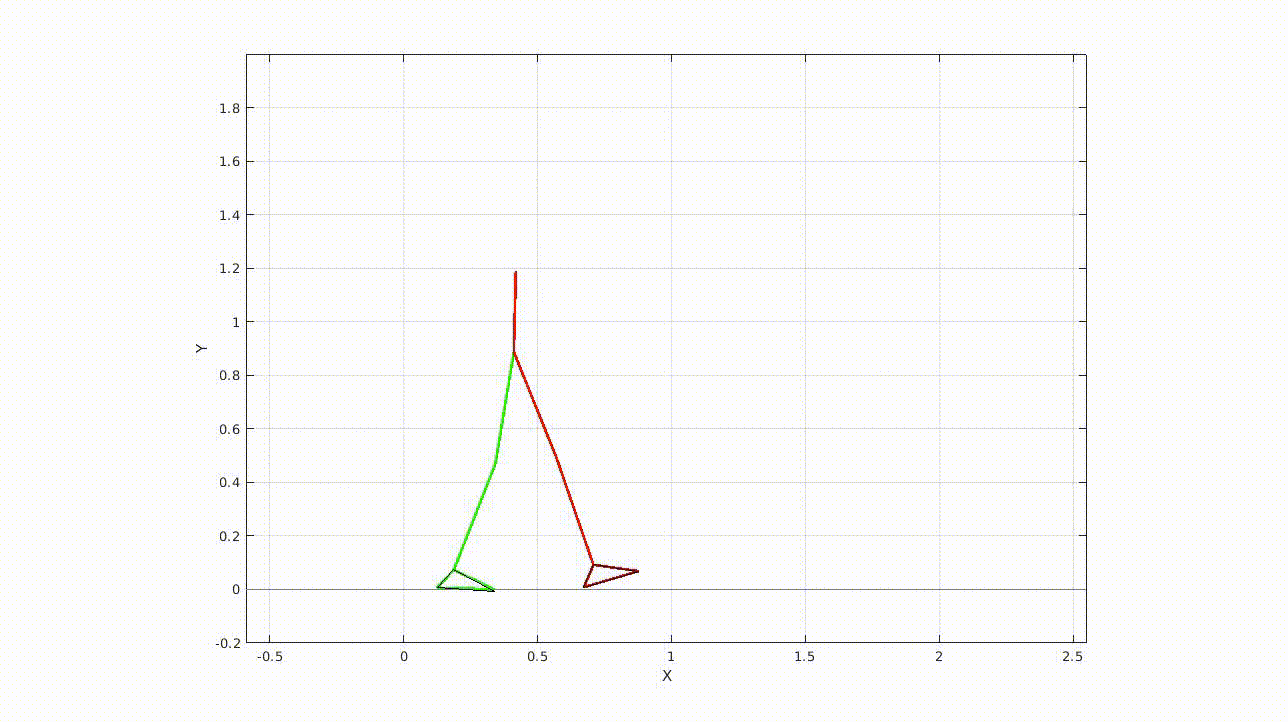IMU-based Biomechanical Gait Analysis
Inertial sensing enables field studies of human movement and ambulant assessment of patients. However, the challenge is to obtain a comprehensive analysis from low-quality data and sparse measurements.
We present a method to estimate gait kinematics and kinetics directly from raw inertial sensor data performing a single dynamic optimization. We formulated an optimal control problem to track accelerometer and gyroscope data with a planar musculoskeletal model. In addition, we minimized muscular effort to ensure a unique solution and to prevent the model from tracking noisy measurements too closely. Within multiple publications, we investigated the method to reconstruct walking and running in 2D and 3D.
In contrast to existing IMU processing methods, dynamically consistent simulations were obtained. Besides kinematics and kinetics, further metrics such as muscle activations and metabolic cost can be directly estimated from simulated model movements. In summary, the method is insensitive to sensor noise and drift and provides a detailed analysis solely based on inertial sensor data.
Example Simulations

2D IMU Tracking (Subject 1; Journal of Biomechanics)
![]()
3D IMU Tracking with IMUs at lower body (ISB 2021)
Publications
- Dorschky E., Nitschke M., Seifer AK., van den Bogert AJ., Eskofier B.:
Estimation of Gait Kinematics and Kinetics from Inertial Sensor Data Using Optimal Control of Musculoskeletal Models
In: Journal of Biomechanics (2019)
ISSN: 0021-9290
DOI: 10.1016/j.jbiomech.2019.07.022
URL: https://www.mad.tf.fau.de/files/2019/08/201908_JBiomech_Dorschky.pdf
BibTeX: Download
- Nitschke M., Dorschky E., Eskofier B., Koelewijn A., van den Bogert AJ.:
Trajectory Optimization of a 3D Musculoskeletal Model with Inertial Sensors
XXVIII Congress of the International Society of Biomechanics (ISB) (Online, 25. July 2021 - 29. July 2021)
URL: https://www.mad.tf.fau.de/files/2021/07/nitschke_isb_2021_abstract.pdf
BibTeX: Download
- Nitschke M., Mayer M., Dorschky E., Koelewijn A.:
How many sensors are enough? Trajectory optimization using sparse inertial sensor sets
9th World Congress of Biomechanics 2022 Taipei (Taipei, 10. July 2022 - 14. July 2022)
URL: https://www.youtube.com/watch?v=TznVCgK4DF0
BibTeX: Download
